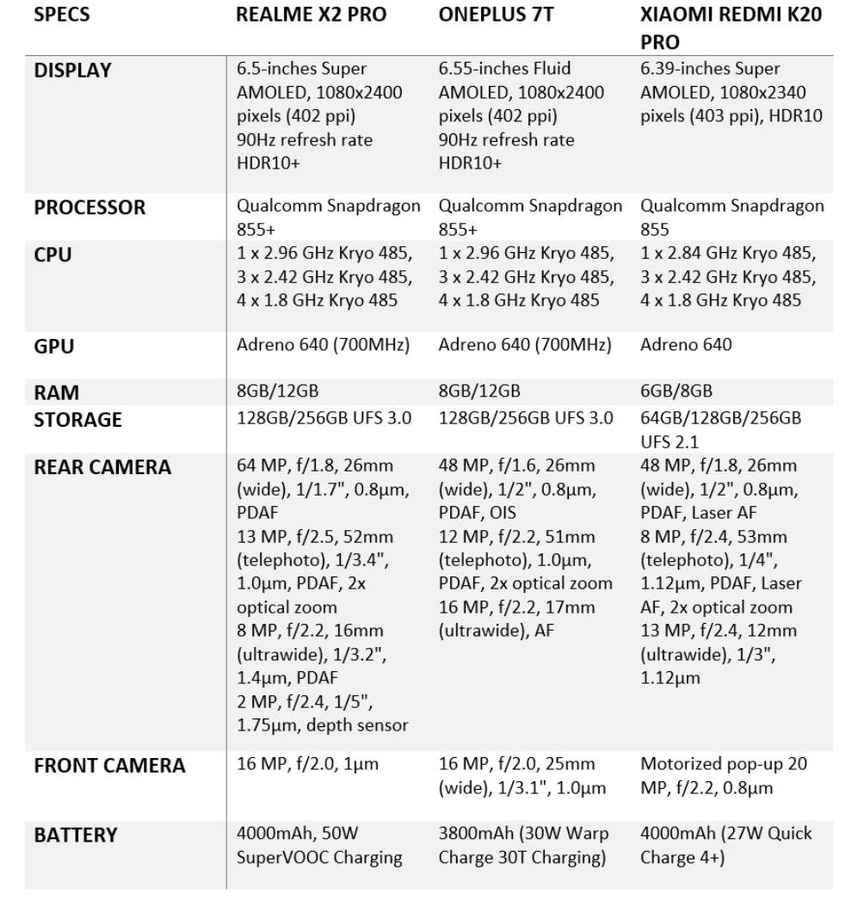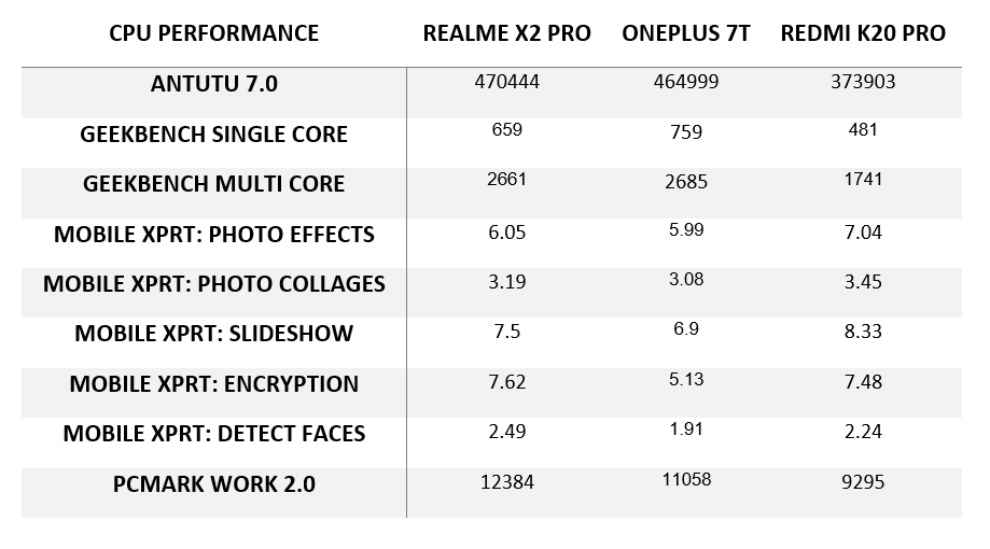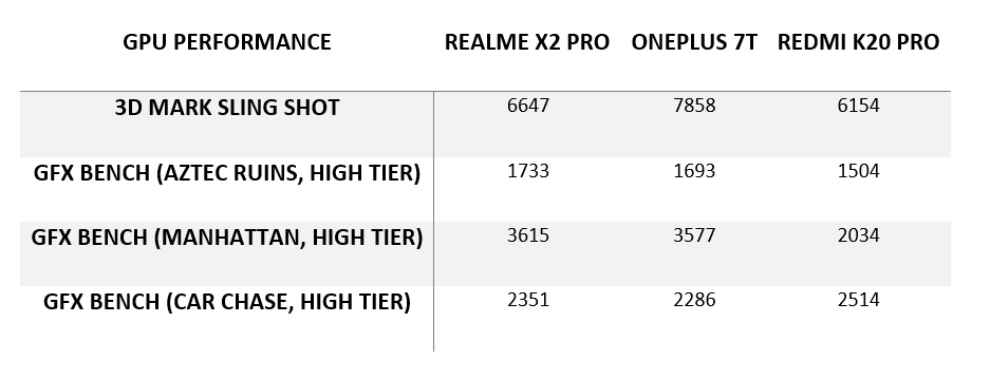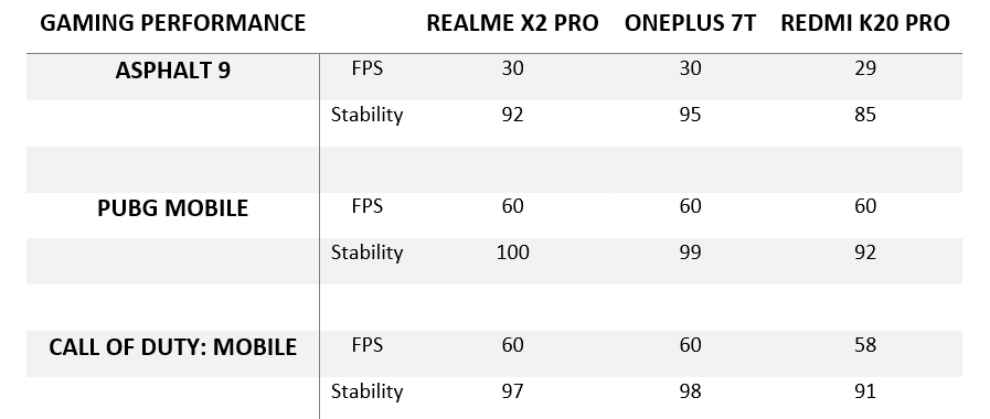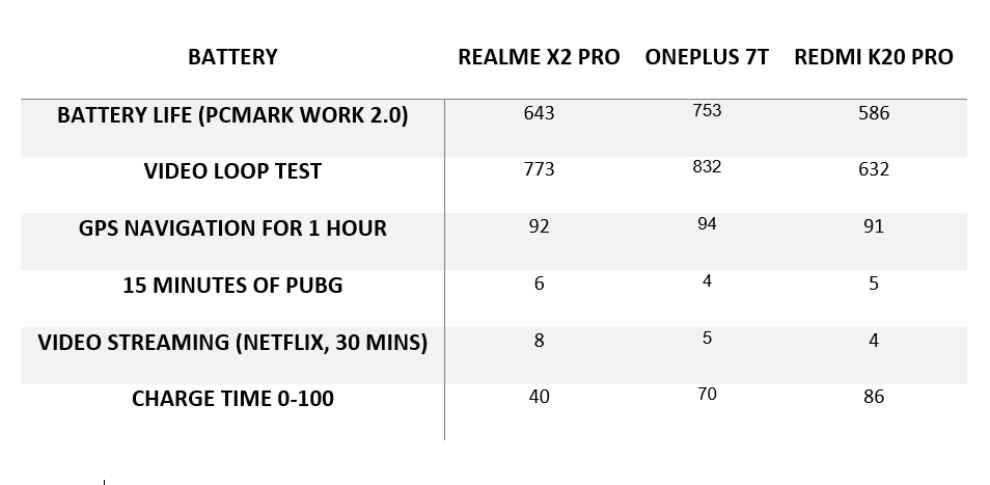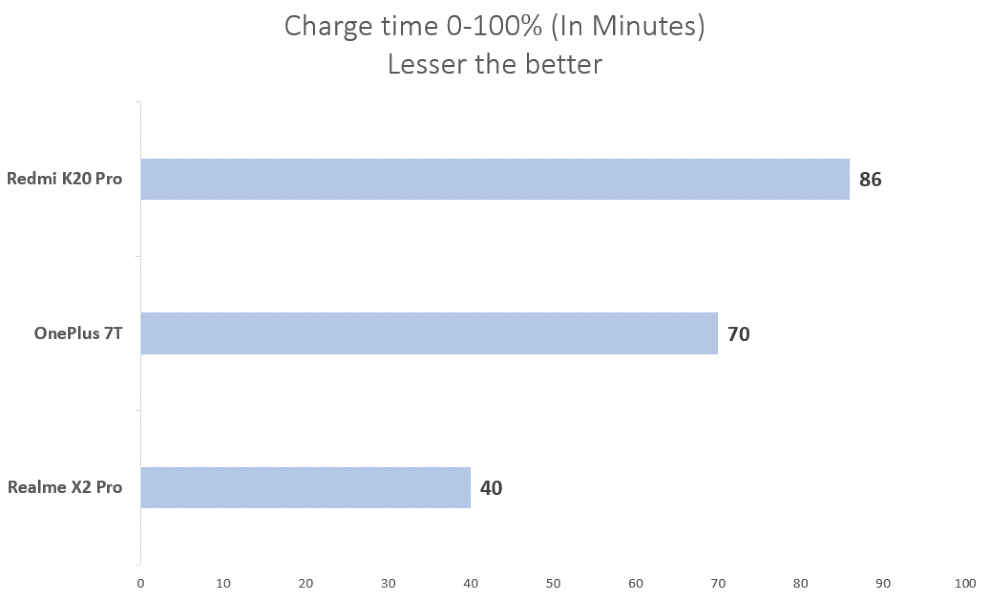Realme X2 Pro performance comparison: Is this the Poco F2 we never got?
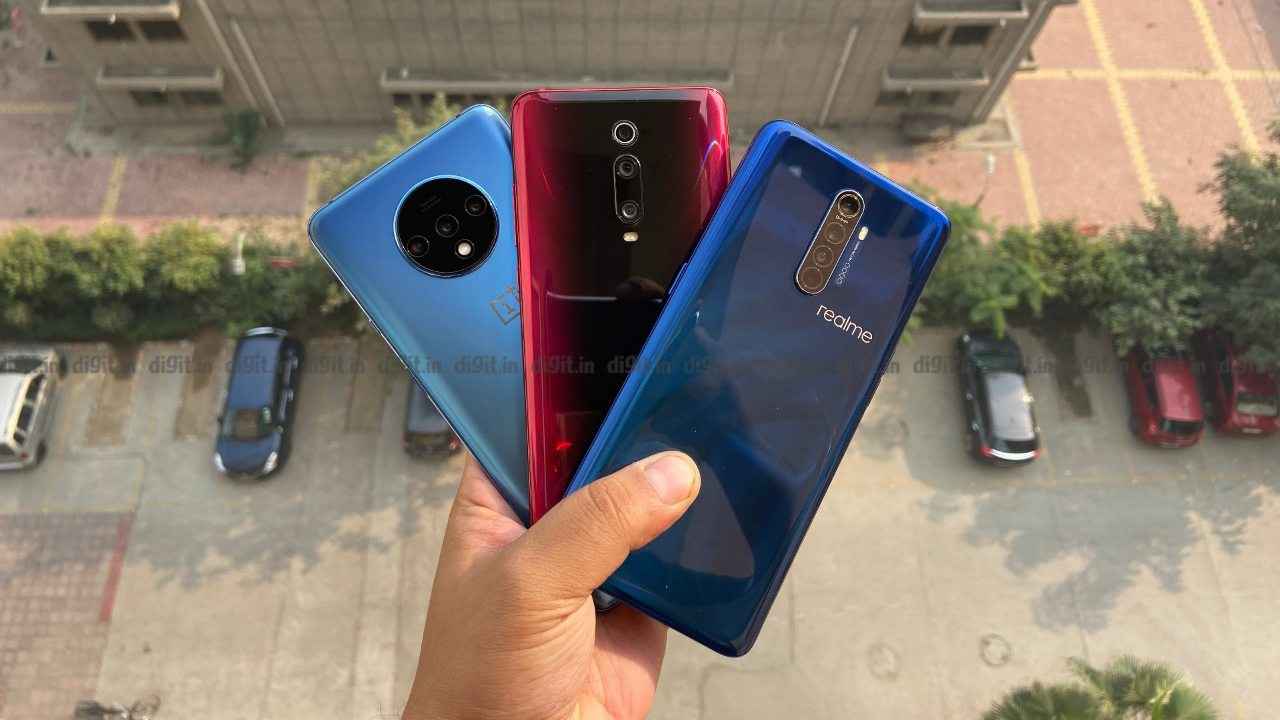
The Realme X2 Pro has launched in India starting Rs 29,999.
It's the most affordable Snapdragon 855+ powered flagship smartphone in India.
But is the Realme X2 Pro really the flagship killer of 2019? Read our in-depth performance comparison to find out.
With just a year of existence, Realme scaled up from being a budget smartphone brand to manufacturing industry-leading mid-rangers and now, the Oppo spin-off is ready with its first flagship smartphone. Calling it the flagship killer wouldn’t be wrong, at least on paper, going by the spec-sheet. The hardware and the features are nearly identical to the OnePlus 7T, including the Snapdragon 855+ processor, 8GB RAM and 256GB UFS 3.0 storage, a 90Hz AMOLED display and stereo speakers. In addition to that, the X2 Pro comes with a similar 64MP quad camera setup like the Realme XT, only this time, there’s a dedicated telephoto lens that can digitally zoom to 20x.
If these features in this price range remind you of another smartphone from last year, you’re not alone. We also feel this is the Poco F2 that Xiaomi is yet to reveal. A smattering of flagship features at the price of a premium mid-ranger was how the previous Poco F1 was defined, and it was, so to say, the flagship killer last year. But how do we know for sure? We compared the performance and battery life of the OnePlus 7T, Redmi K20 Pro and the Realme X2 Pro to give you the answer.
But first, the specs.
Moving on to why we’re here in the first place —
CPU performance
The Snapdragon 855+ powers both the OnePlus 7T and the Realme X2 Pro, while the regular Snapdragon 855 powers the Redmi K20 Pro. The primary difference between is the two SoCs is the speed-binned prime core and a faster GPU. The prime core that handles the CPU-intensive tasks in the SD855+ is clocked at 2.96GHz, as compared to 2.84GHz in the SD855. This allows for better single-core performance, something that power-hungry Android games like CoD: Mobile demand. More than that, the SD855+ comes with a modified Adreno 640 GPU running at 700MHz and according to Qualcomm, it’s 15 percent faster in rendering graphics, allowing for better textures, HDR gaming and the like. It’s clear now why Realme had to choose the SD855+ over the regular SD855, aside from the perception, of course. As a brand, Realme is tuned to a more youthful audience. The college-going folk who likes to stay engrossed in match after match of PUBG Mobile. The SD855+ should leave them satisfied. But that’s not to say that the SD855 is any slower on the Redmi K20 Pro.
On benchmarks, the Realme X2 Pro beats the competition in some cases, but in others, it’s at par with them. Here’s how the phones line up in CPU performance —
The Realme X2 Pro is able to beat the OnePlus 7T in AnTuTu and in PCMark Work 2.0, while the Redmi K20 Pro lags behind in all instances here, and in some cases, by quite a large margin. The + in the Snapdragon 855 clearly results in enhanced performance, even though you won’t really feel that big of a difference in day to day usage. Having said that, note the Mobile Xprt 2015 scores of the three phones. Notice how the Redmi K20 Pro, despite scoring lower in synthetic benchmarks, managed to make up for it in real-world simulations. This indicates the three phones are actually quite at par when it comes to being a daily driver.
GPU performance
The GPU in the SD855+ is also turbocharged to crunch graphics faster, and as a result, deliver better frame rates and stability in games. We will get to the gaming performance in a bit, but here’s how they fare in our GPU tests.
On 3DMark Slingshot, the Realme X2 Pro was slower than the OnePlus 7T by roughly 15 percent, but surprisingly, the X2 Pro makes up for it in the latter tests on GFXBench. It’s difficult to pinpoint the discrepancy in scores as the display size and resolution are the same for both the phones. It could be that the OnePlus 7T is far more optimised and the X2 Pro is facing teething issues. The Redmi K20 Pro, however, failed to keep up with the OnePlus 7T and the Realme X2 Pro. It managed to win in only one test on GFXBench.
These are just scores for synthetic tests, which might not reflect in real-world usage. To find how these phones performed in the real world, we did what anybody can. Game on them!
Gaming performance
We played the three most popular high-intensity Android games to test the performance — PUBG Mobile, CoD: Mobile and Asphalt 9. All three of the phones proved to be quite capable of delivering a smooth and stable experience. All three of them could play PUBG Mobile at the new 60 FPS mode with everything maxed out. The details and textures looked rich and vibrant while the gameplay was super smooth. On Gamebench, we noted that the Realme X2 Pro delivered 60 FPS at 100 percent stability in PUBG Mobile and 60 FPS at 97 percent stability in Call of Duty: Mobile while on Asphalt 9 it stuck to 30 FPS at 92 percent stability. These numbers are enough to get a stable gaming experience, and if you are planning to get the X2 Pro for gaming, you won’t be disappointed at all.
The OnePlus 7T is equally good in delivering a stable gaming experience. On PUBG Mobile, the OnePlus 7T also delivered peak 60 FPS at 99 percent stability, while on CoD: Mobile the OnePlus 7T also delivered 60 FPS at 98 percent stability and Asphalt 9 ran at 30 FPS at 95 percent stability.
Surprisingly, the K20 Pro proved to be right up there with the others with peak frame rates on both PUBG Mobile and CoD: Mobile while on Asphalt 9, the device ran at 28 FPS. The stability of the games were lower than Realme X2 Pro and OnePlus 7T.
Battery life
Moving on to battery life, the Realme X2 Pro’s 4000mAh battery is just enough to power through the day. It won’t last you longer than the typical work. The OnePlus 7T lasted the longest in our PCMark Work 2.0 battery test, and for good reason. The OnePlus flagship had the lowest battery drop during our real-world test involving 15 minutes of gaming and 30 minutes of streaming. Interestingly, the Realme X2 Pro drained battery the most while the K20 Pro was slightly better. These numbers indicate the OnePlus 7T is able to last well over a day, while the K20 Pro will last less than a day and you will likely have to plug it in before leaving work in the evening.
Fast Charging speed
As for the charging speeds, this is where the X2 Pro nullifies the heavy battery drain. With the 50W SuperVOOC charger that comes out of the box, the X2 Pro charged to full capacity in around 30 minutes, and 45 percent to 100 percent in 15 minutes. It’s hands down the fastest charging we have seen this year. The OnePlus 7T takes a little longer to top up the 3800mAh battery with the Warp Charge 30T. Approximately 65 minutes. The K20 Pro also supports 27W fast charging and gets the fast charger out of the box. But this one took a long 90 minutes to charge to full capacity.
Conclusion
The Realme X2 Pro is indeed a flagship killer, or more importantly a OnePlus killer. Considering the price, the X2 Pro delivers nearly the same performance, and sometimes even better, than the OnePlus 7T. It kills the competition with the charging speed and the gaming performance is quite exemplary. The Realme X2 Pro also makes the case for making the Redmi K20 Pro look pretty bleak. The K20 Pro ruled the charts when it debuted but over time with the Asus 6z dropping the price permanently, and now the Realme X2 Pro launching, it has some stiff competition. Based on our tests, it’s clear that you have to get an affordable flagship, the Realme X2 Pro is one of the best there is.

